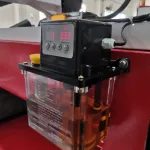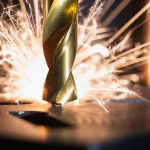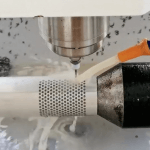Table of Contents
In this comprehensive guide, we will delve deep into the realm of CNC machining tolerance types, exploring what they are, why they matter, and the various categories of tolerance that CNC machinists encounter in their daily work.
The Basics of CNC Machining Tolerance
What is Tolerance in CNC Machining?
Before diving into the specific types of CNC machining tolerances, let’s understand what tolerance means in this context. In CNC machining, tolerance refers to the allowable deviation from a specified dimension or measurement. It sets the boundaries within which a machined part or component must fall to be considered acceptable.
Why Are Tolerances Important?
- Precision and Quality: Tolerances ensure that the finished product meets the desired specifications precisely, ensuring quality and functionality.
- Interchangeability: Tolerances enable parts to fit together seamlessly, promoting interchangeability and compatibility.
- Cost Efficiency: Tighter tolerances can increase costs due to increased precision and meticulous machining processes. Understanding and selecting the right tolerance type can help balance precision and cost-effectiveness.
Common CNC Machining Tolerance Types
Geometric Tolerances
a. Straightness: This tolerance specifies the allowable deviation from a straight line. It is crucial for shafts, rods, and linear components.
b. Flatness: Flatness tolerance determines the permissible variation in flat surfaces. It’s essential for ensuring components sit flush and mate correctly.
c. Roundness: Roundness tolerance relates to the circularity of a part. It’s vital for components like bearings and pistons.
Dimensional Tolerances
a. Size Tolerance: This is the most basic form of tolerance and sets the allowable variation in size. It is often denoted by a “+/-” symbol followed by a numeric value.
b. Hole Tolerance: Hole tolerances are critical for ensuring proper fits for bolts, screws, and other fasteners.
c. Positional Tolerance: This tolerance defines the allowable deviation in the location of features like holes or slots relative to a reference point.
Angular Tolerances
a. Angularity: Angularity tolerance specifies the permissible variation in the angle of a feature concerning a specified reference. It’s crucial for ensuring proper alignment in assemblies.
b. Parallelism: Parallelism tolerance ensures that two surfaces or axes remain parallel within the specified limits.
c. Perpendicularity: Perpendicularity tolerance dictates the allowable deviation from a 90-degree angle between two surfaces or features.
Profile Tolerances
a. Profile of a Line: This tolerance governs the form of a single line element, ensuring it adheres to the specified shape.
b. Profile of a Surface: Profile of a surface tolerance controls the shape of a surface within a specified boundary.
Runout Tolerances
a. Circular Runout: Circular runout tolerance focuses on the variation in circular features, such as the outer diameter of a cylindrical part.
b. Total Runout: Total runout tolerance encompasses the entire part and ensures features are within the specified limits.
Selecting the Right Tolerance for Your CNC Project
Choosing the appropriate tolerance for CNC machining projects is a critical decision that affects the final product’s quality and cost. Here are some factors to consider when making this choice:
Part Functionality
Consider the role the machined part plays in the overall assembly or system. Components with critical functions may require tighter tolerances to ensure proper operation.
Manufacturing Process
The capabilities of your CNC machining equipment and the skill of your machinists play a significant role in determining achievable tolerances. Discuss the project with your machining team to understand their capabilities.
Cost Constraints
Tighter tolerances often require more time and resources, which can increase manufacturing costs. Balancing precision with cost-effectiveness is essential for project success.
Material Properties
Different materials exhibit varying degrees of dimensional stability and machinability. Some materials may inherently require tighter tolerances.
Assembly Requirements
Consider how the machined part will fit into the overall assembly. Parts with looser tolerances may be acceptable if they don’t affect the overall functionality or fit of the assembly.
Case Studies - Tolerance in Real-world CNC Machining
To illustrate the importance of tolerance in CNC machining, let’s explore a few real-world case studies:
Case Study 1: Aerospace Components
In aerospace manufacturing, precision is paramount. Tolerances are often extremely tight to ensure safety and performance. We’ll delve into specific examples from the aerospace industry.
Case Study 2: Automotive Production
Automotive manufacturing requires a balance between precision and cost-effectiveness. We’ll examine how tolerances are applied in producing critical automotive parts.
Case Study 3: Medical Device Manufacturing
The medical industry demands strict adherence to tolerances to ensure the medical devices’s safety and effectiveness. We’ll explore how CNC machining contributes to this sector.
Tips for Ensuring Tolerance Compliance
Achieving the desired tolerances in CNC machining is not solely the responsibility of machinists. Designers and engineers play an essential role in ensuring compliance. Here are some tips:
- Clear Communication: Effective communication between design, engineering, and machining teams is critical to define and meet tolerances accurately.
- Design for Manufacturability: Design parts with manufacturability in mind. Avoid overly complex features that are challenging to machine within specified tolerances.
- Quality Control Measures: Implement robust quality control processes to verify that machined parts meet tolerance requirements.
- Continuous Improvement: Continuously assess and improve manufacturing processes to achieve tighter tolerances while maintaining cost-effectiveness.
Conclusion
In CNC machining, correctly understanding and applying tolerance types is the key to delivering high-quality, reliable, and cost-effective components. Precision matters whether you’re in aerospace, automotive, medical devices, or any other industry.
As you embark on your CNC machining projects, remember that selecting the proper tolerance, communicating effectively, and maintaining quality control are essential steps toward success. Tolerances are not just numbers; they are the foundation of precision engineering.
By comprehending and harnessing the power of CNC machining tolerance types, you’ll be well-equipped to navigate the intricate world of precision manufacturing, delivering products that meet and exceed expectations.


